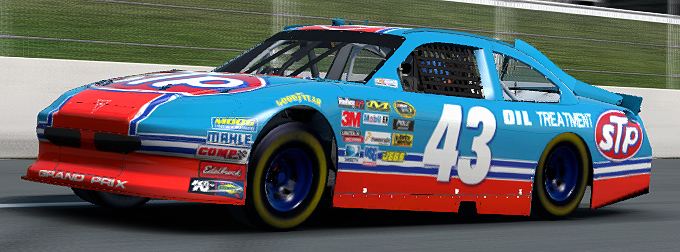Last Updated on June 19, 2023 by Ryan
A NASCAR Inside Line car setup is a combination of the various adjustments and modifications that drivers use to prepare their cars for each race. It includes things like tire pressure, ride height, shock settings, aerodynamic downforce, gear ratios, and brake bias. The goal of any car setup is to optimize performance on a particular track.
A driver’s individual driving style can also be taken into consideration when making these adjustments. Some teams will even do wind tunnel testing or simulate tracks in order to better understand how certain setups may affect vehicle performance in different conditions. Ultimately it is up to the driver and team engineers to decide which adjustments are best for the given situation at hand.
Setting up your car for a Nascar race can be incredibly daunting, however it doesn’t have to be. With the help of Nascar Inside Line Car Setups you’ll be able to set up your car in no time! This system offers advanced setup and tuning options that allow you to tailor your car’s performance specifically for the track conditions you’re racing on.
From shocks, brakes, and tire pressures; this innovative tool is designed to take all the guesswork out of setting up your vehicle. So if you want to maximize your performance on the track, make sure you check out Nascar Inside Line Car Setups today!
NASCAR The Game: Inside Line Car Setups
How Do You Set Up Cars in Nascar Heat 5?
Setting up cars in NASCAR Heat 5 is a great way to customize and fine-tune your vehicle for optimal performance. First, you’ll need to choose a car from the available selection, or create an entirely new one using the Car Editor. Next, you’ll be able to adjust various aspects of the car such as its gear ratios, aerodynamics, tire pressure and weight distribution.
You can also make changes to engine parts like camshafts and heads as well as other components like brakes and suspension systems. Finally, after making all these adjustments it’s important that you test out your setup on different tracks so that you can make sure everything is working correctly before taking it onto the track during races!
How Do I Make My Car Faster in Nascar Heat?
If you want to make your car faster in NASCAR heat, there are several modifications and upgrades you can do. First, consider upgrading your engine components such as the intake manifold, throttle body, headers and exhaust system. Additionally, improving aerodynamics by adding a spoiler or air dam can help reduce drag and increase speed.
If your budget allows it, installing high-performance tires with a better grip on the track will also improve acceleration and top speeds. Finally, tuning up the suspension by adjusting ride height or spring rates can improve handling which leads to better lap times overall.

Credit: nascar-the-game-inside-line.blogspot.com
Nascar Inside Line Daytona Setup
NASCAR Inside Line is a great way to experience the thrill of racing on Daytona International Speedway. With this setup, you’ll have access to an incredibly detailed and realistic recreation of the iconic track, complete with all its twists and turns. Plus, you can customize your car’s setup for improved performance in qualifying and races, allowing you to get a true feel for how each corner differs from one another.
Whether it’s your first time at Daytona or your hundredth time around the track, NASCAR Inside Line provides an exciting experience that will keep you coming back for more!
Conclusion
This blog post illustrated how the car setup for a Nascar Inside Line race can be modified and tailored to each driver’s individual needs. It discussed topics such as tire pressure, chassis adjustments, aerodynamics, and engine tuning to help drivers maximize their performance on the track. With this knowledge in hand, drivers will now have an advantage when setting up their cars for racing in NASCAR Inside Line.
Ultimately, it is important for racers to understand that the right car setup can make all the difference between success and failure on race day.



